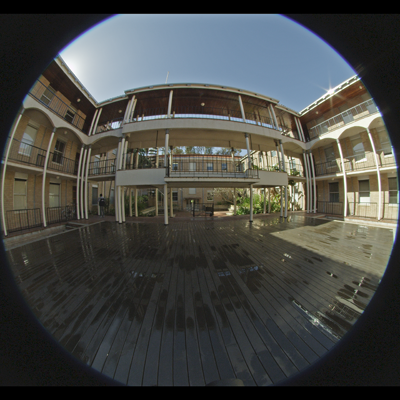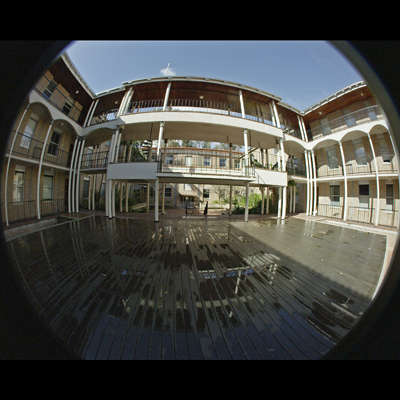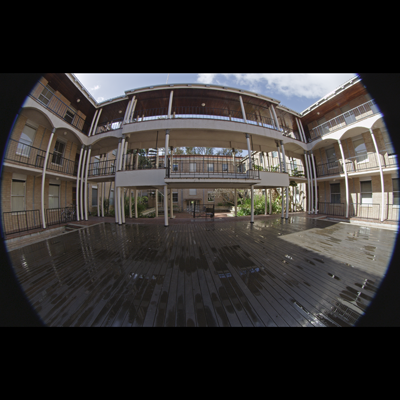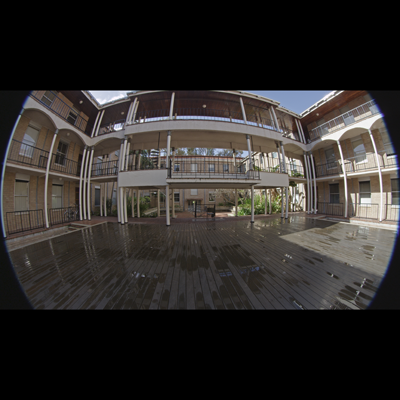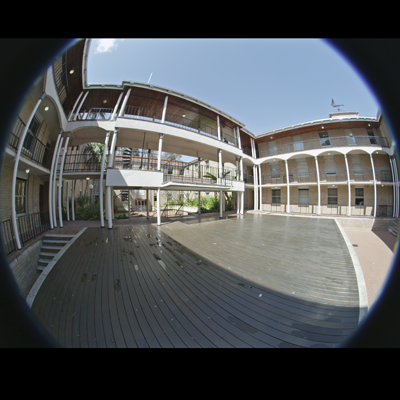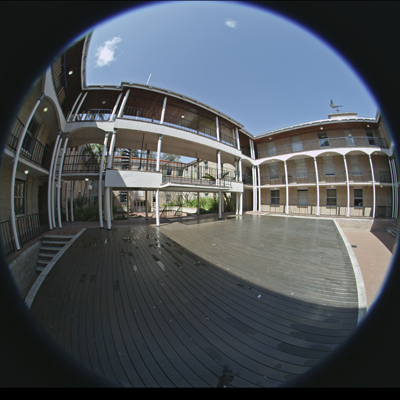Red Scarlet 4K video and various fisheye lensesWritten by Paul BourkeAugust 2012
The following documents and evaluates a number of circular fisheye lenses on the Red Scarlet. The applications for such a combination are mostly for video recording for planetariums, other uses involve multiple cameras for 360 panoramic video capture. While the Scarlet is an APS-C sensor the whole sensor vertically is only available in 5K mode, this is unfortunately limited to 12fps. In 4K mode (30fps) the clipping is as shown for each tested lens. Note the Canon 5-15mm lens while easily the higher quality is designed for a full frame sensor hence the large degree of clipping.
Example forming spherical (equirectangular) projection from a pair (180 degrees rotated) of fisheye images using the 4.5mm Sigma fisheye lens and the Red Scarlet in 4K mode, 30fps. Rendered at 4K and mask applied to hide the seam. 
Example forming cylindrical projections from a pair (180 degrees rotated) of fisheye images using the 8-15mm Canon fisheye lens and the Red Scarlet in 4K mode, 30fps. Rendered at 8K and mask applied to hide the seam. Vertical FOV: 40 degrees.

Vertical FOV: 60 degrees.

Vertical FOV: 80 degrees.

There are ways of dealing with the truncation, the fisheye can be rotated without introducing distortion. The consequence is loss of image at the opposite side of the fisheye to the direction of rotation. 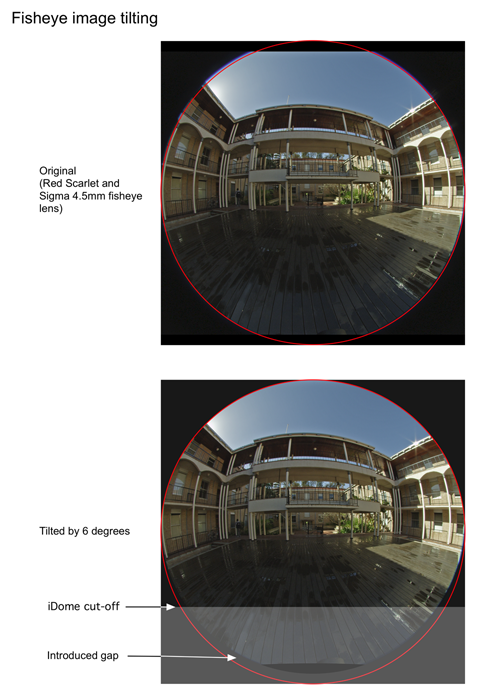
|
